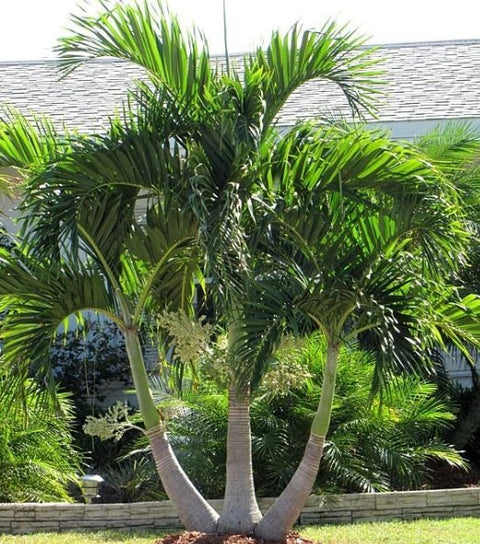Information : Fiddle Leaf Fig

Are you a plant lover looking to expand your indoor jungle? Fiddle leaf figs are one of the most popular houseplants, known for their large, beautiful leaves and ability to add a touch of lushness to any space. If you're looking to grow your own fiddle leaf fig or propagate an existing plant, you're in luck! In this article, we'll explore the various methods of propagating a fiddle leaf fig and provide step-by-step instructions for each. So grab your gardening gloves and let's get started!
Fiddle Leaf Fig Propagation: Why and How
Propagation is the process of creating new plants from a parent plant. It allows you to expand your plant collection without having to purchase new plants, and it can be a rewarding experience to nurture a plant from its earliest stages. Fiddle leaf fig propagation is necessary because these plants are typically slow-growing and can be difficult to find in stores. By learning how to propagate fiddle leaf figs, you can ensure a constant supply of these beautiful plants in your home.
There are several methods of propagating fiddle leaf figs, each with its own advantages and requirements. Let's explore three popular methods: leaf-cutting propagation, air layering propagation, and water propagation.

Leaf-Cutting Propagation: Growing a Fig from a Leaf
Leaf-cutting propagation involves taking a healthy leaf from a fiddle leaf fig plant and encouraging it to grow roots and eventually develop into a new plant. This method is straightforward and can be successful with proper care and attention. Here's a step-by-step guide to propagating a fiddle leaf fig using leaf cuttings:
- Select a healthy leaf: Choose a mature leaf from your fiddle leaf fig plant that is free from damage or disease.
- Prepare a rooting hormone: Use a powdered rooting hormone to encourage root growth in the cutting.
- Cut and treat the leaf: Make a clean cut just below a leaf node, ensuring there are no leaves remaining on the stem. Dip the cut end of the leaf in the rooting hormone.
- Plant the leaf cutting in soil: Plant the cutting in a small pot filled with well-draining soil. Ensure the cut end is buried about an inch deep and that the leaf is supported upright.
- Proper care and maintenance: Place the pot in a warm, bright location, but out of direct sunlight. Water the cutting when the soil feels dry, being careful not to overwater. Over time, roots will develop, and a new plant will begin to grow.
Air Layering Propagation: Encouraging Roots on a Branch
Air layering is a more advanced method of propagation that involves creating a rooting environment for a specific branch of a fiddle leaf fig plant. This method allows you to create a more established plant right from the start. Here's how to propagate a fiddle leaf fig using air layering:
- Identify a suitable branch: Choose a healthy branch with a diameter of about 1 inch for air layering. This method is especially useful if you want to propagate a particular branch with desirable characteristics.
- Girdle the selected branch: Using a sharp knife, make a 1-inch-long cut through the bark of the branch. This will interrupt the flow of nutrients, encouraging root growth.
- Apply rooting hormone and wrap with sphagnum moss: After girdling, apply powdered rooting hormone to the cut area. Then, wrap the area with damp sphagnum moss, securing it with plastic wrap.
- Secure the moss and monitor progress: Use twine or plastic ties to hold the moss in place, ensuring it remains moist. Periodically check the moss for root growth, which typically takes several weeks to several months.
- Separate the rooted portion and transplant: Once roots have developed, carefully cut through the branch below the rooting area. Transplant the rooted portion into a new container with well-draining soil.
Water Propagation: The Simplicity of Rooting in Water
Water propagation is the easiest and most popular method of fiddle leaf fig propagation. It involves placing a stem cutting in water and allowing it to develop roots before transferring it to soil. Here's how to propagate a fiddle leaf fig using water:
- Select a suitable stem cutting: Choose a healthy stem with two to three nodes. Nodes are the areas on the stem where leaves and roots emerge.
- Prepare a glass container with water: Fill a glass container with room-temperature water, ensuring that the nodes on the stem cutting are submerged.
- Trim leaves and place the cutting in water: Trim the leaves on the lower two-thirds of the stem cutting, leaving only a few leaves at the top. Place the cutting in the water, making sure the nodes are fully submerged.
- Monitor root growth and change water regularly: Place the glass container in a bright area, but away from direct sunlight. Check the water level daily and change it every week to prevent bacterial growth.
- Transfer cutting to soil: Once the cutting has developed a sufficient root system, carefully transfer it to a pot with well-draining soil, burying the nodes and roots.
Tips and Tricks for Successful Propagation

Propagation can be a rewarding but delicate process. Here are some tips and tricks to help you achieve successful results:
- A. Providing optimal conditions for growth: Maintain a warm and humid environment by placing your propagated fiddle leaf fig in a bright area, but away from direct sunlight. Use a well-draining soil mixture and water the plant when the top inch of soil feels dry.
- B. Common mistakes to avoid: Overwatering is one of the most common mistakes in propagation. It's essential to strike a balance between providing enough water for root development and avoiding waterlogged soil. Additionally, avoid using overly large containers, as they can lead to root rot.
- C. Importance of patience and regular monitoring: Propagation takes time, and it's important to be patient. Regularly monitor your propagated plant for signs of growth, root development, and overall health. Adjust care and watering as necessary.
- D. How to troubleshoot common propagation issues: If you encounter problems during the propagation process, such as leaf yellowing or lack of root growth, consider adjusting the lighting, temperature, or watering routine. Seek advice from plant experts or online communities for specific guidance.
Conclusion: Growing Your Own Indoor Jungle with Fiddle Leaf Fig Propagation
Propagating a fiddle leaf fig can be a rewarding and cost-effective way to expand your indoor jungle. By following the methods and tips outlined in this article, you can successfully propagate your own fiddle leaf fig plants and enjoy the beauty and benefits of these stunning houseplants. Whether you choose leaf-cutting propagation, air layering, or water propagation, the journey of growing your own fiddle leaf fig is sure to bring joy and a sense of fulfillment. So grab your gardening tools and let nature take its course as you embark on the exciting adventure of becoming a fiddle leaf fig propagator extraordinaire!






























Comments (1)
my plant got bumped and stem split can I cut and root in water or can I tap stem, and it will men itself